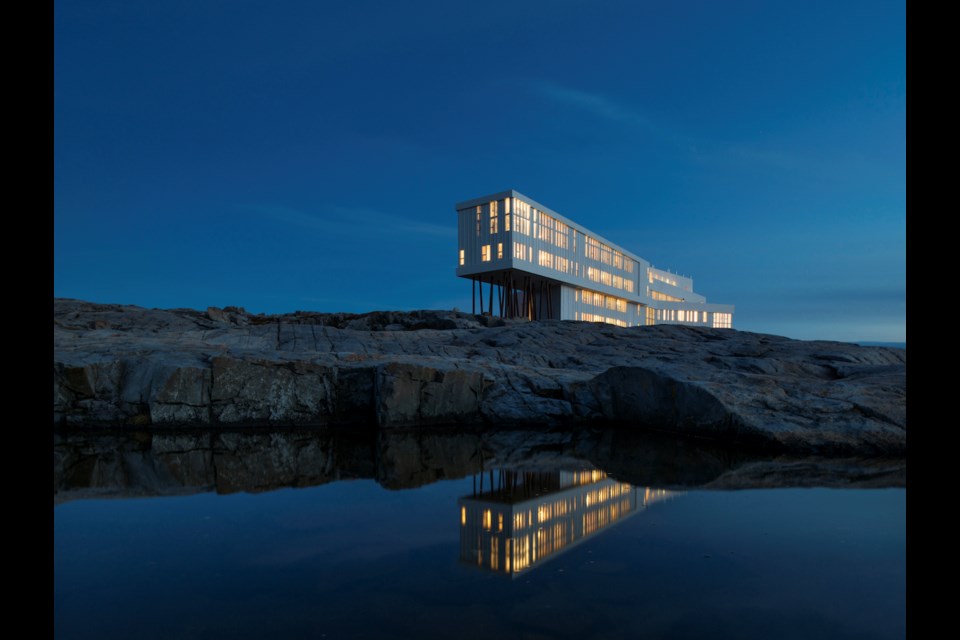Todd Saunders’ spectacular structures helped put remote Fogo Island on the map. Now he’s designing the world.—Lise Boullard
When I meet Todd Saunders at Gastown’s Inform Interiors, he’s seated on a plush velour sofa, wearing a black turtleneck and slacks. He’s just come off of a whirlwind 18-hour trip from his home in Bergen, Norway then straight to Whistler where he would have spent a few days backcountry skiing, if it wasn’t for uncooperative weather, he tells me. “(Backcountry) is my thing now, that’s what I do all the time,” he says.
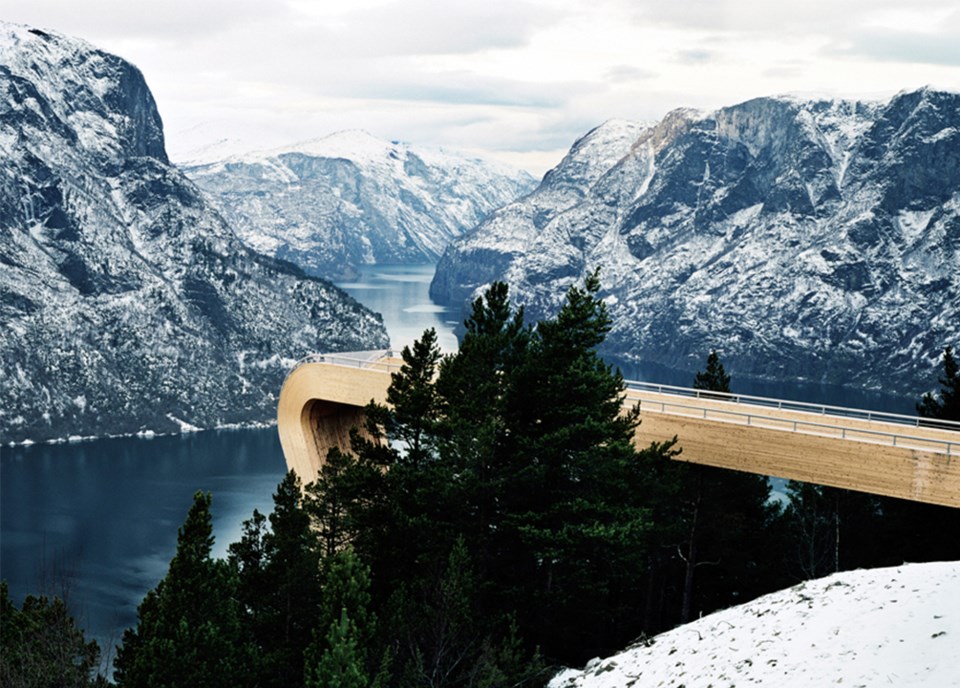
Now he’s squeezing in a few media interviews before he speaks to a room of 500 at Inform about his illustrious architecture career. This work-hard, play-hard lifestyle has become the norm for Todd since a fateful phone call he received while on a kayaking trip on a fjord in Norway back from tech executive and philanthropist Zita Cobb. The Newfoundland-born millionaire was interviewing architects for a project in her tiny, remote hometown of Fogo Island, the idea being to create structures that would breathe life into the small town’s economy and make it a Mecca for artists through an arts residency program.
Newfoundland-born Saunders won the contract, and his work—six modernist artist residences and a hotel, the Fogo Island Inn, built on spindly metal legs on a rocky outcrop overlooking the Atlantic’s crashing waves—have made him an international sensation. Completed in 2012, the 29-room, five-star inn features a heritage library, National Film Board of Canada “e-cinema” and art gallery, and is a destination for affluent travellers, including the likes of Gwyneth Paltrow.
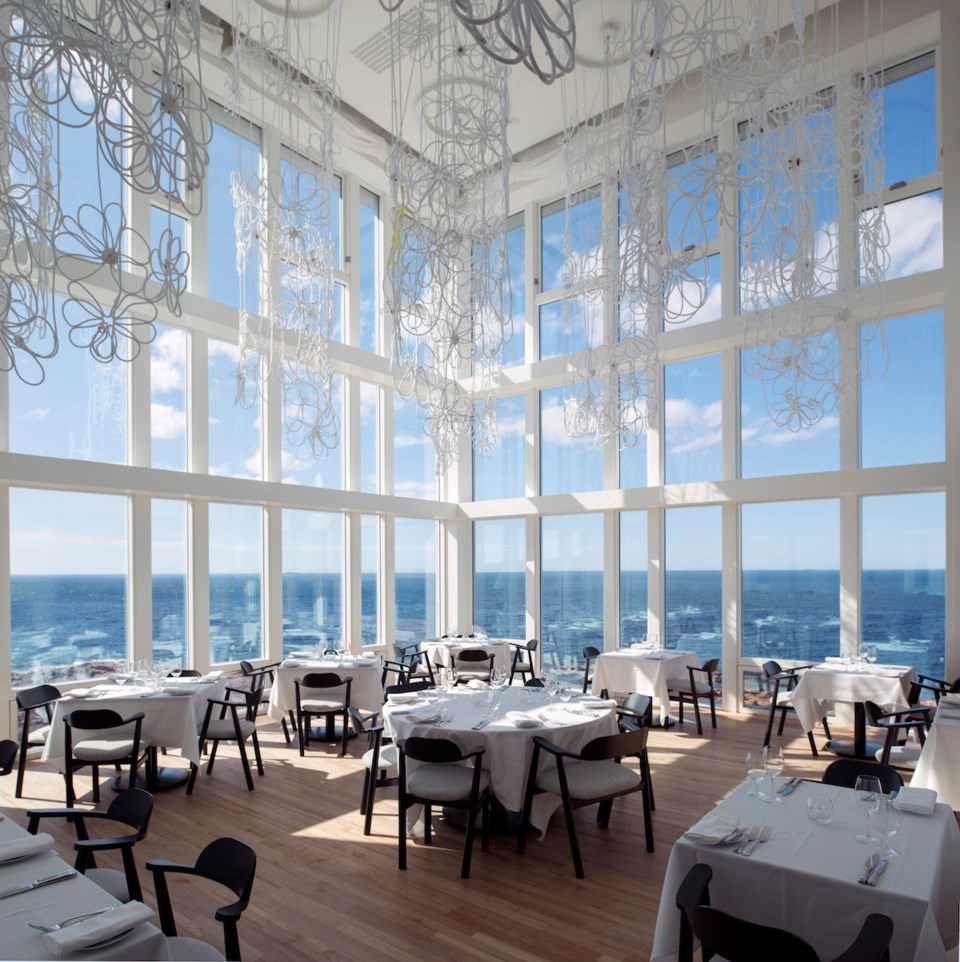
The concept of using architecture as a draw for tourism in remote locations has become Todd’s calling card. The goal is “to try to conserve the natural landscape and then the architecture is like a highlight in the landscape. So instead of destroying the place you add to it,” he explains. His firm, which consists of core team members based in Seattle, Budapest and Lisbon, is currently working on a dizzying number of projects around the globe. “We’ll meet in Bergen for three or four months, then we’ll be on Fogo for a month, then in Budapest … It’s a bit strange the way we work but we’re really good at it.”
On the current project roster is an Inuit museum for Parks Canada in Northern Labrador, a contemporary sculpture museum on the west coast of Sweden and a 15-room back-country ski residence above the Arctic circle. There’s also a project in the North of Sweden consisting of 15 very different, very tiny buildings—a small library, a sauna, a church, some cabins, a dining hall and a spa—winding their way along a nature trail; a destination architecture hospitality project in Patagonia; and a multi-home residential project on a piece of land between Calgary and Banff that’s showcasing the work of four different architects. Of the four architects showcased, Todd’s work is the most Scandinavian in style.
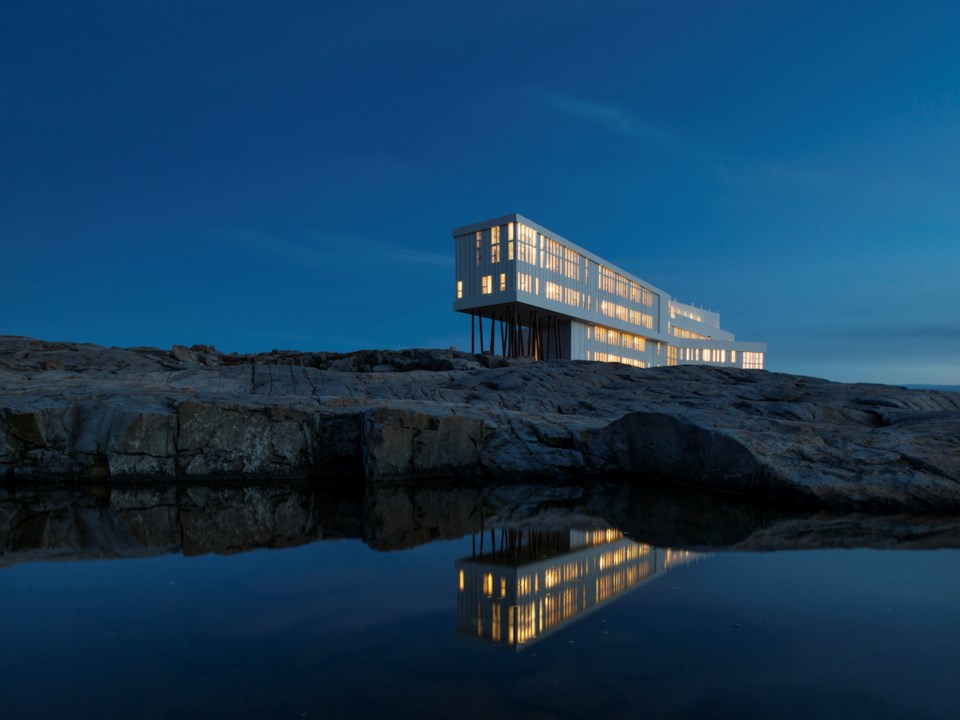
Formerly trained as a town planner and landscape architect, Todd completed a Master of Architecture degree at McGill University in Montreal before making the move to Europe. “I put my thesis in the mail box at the airport in 1996 and then jumped on a plane to Norway. Before that I worked Vienna and Berlin and St. Petersburg and basically used architecture as an excuse to travel because I could work anywhere, and it worked out really well.”
The international theme continues for Todd—his firm currently has projects on the go in 10 different countries, and he’s got a few week-long trips planned in 2018 where his firm will hold lectures and conduct research in Toronto, on Fogo Island, in New York City and possibly Tokyo. His entourage consists of his girlfriend and sometimes his daughters. “(My kids) were one month in Fogo Island with me this past summer and then they’ll go one week to France skiing with me. Their lives are so immersed in architecture,” he says. Todd’s ex-wife, with whom he is still good friends, lives in walking distance from his home in Bergen.
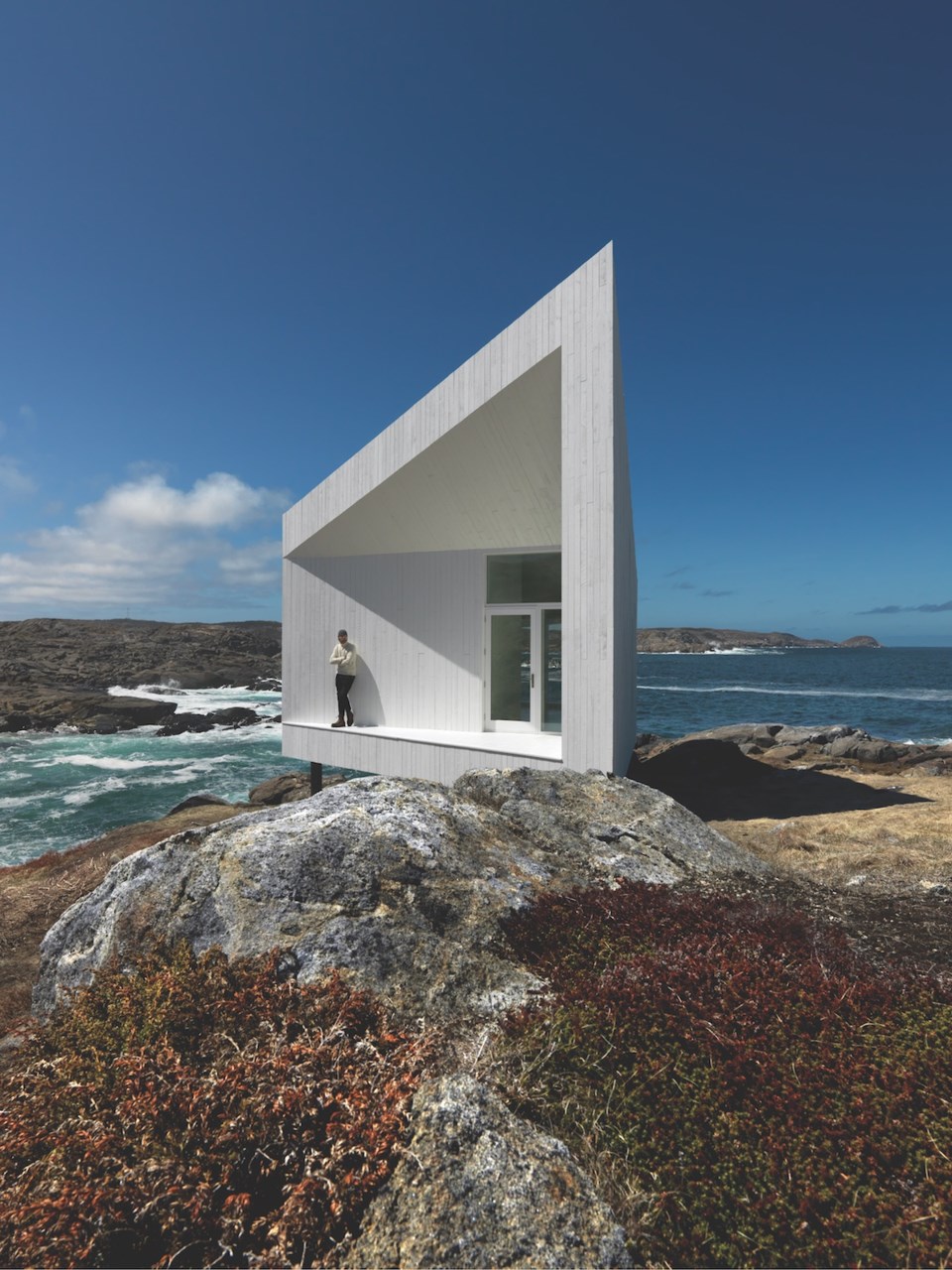
When asked whether he comes to a project with predisposed ideas, he’s adamant that the landscape and client inform the process instead. “We do a lot of research, we understand the place and then we start making it up. That’s actually a mistake a lot of architects make—they start designing before understanding the place. It’s like going on a first date and getting married the next day.” The research process always involves a long first visit to the location and then a series of Skype interviews.
Whereas in the ’50s, ’60s and ’70s, architecture was seen as a commodity or an object, Todd says today the craft has evolved to be more humanized and architects are asking, “How are buildings good for humans? And what role does a building play in society?”
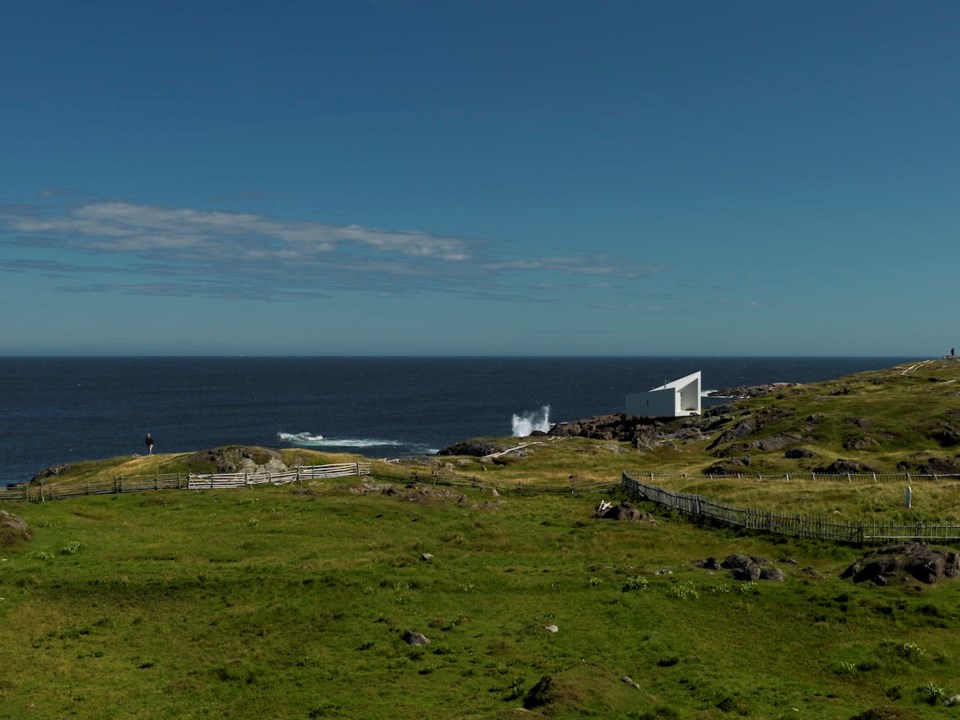
In terms of his firm’s evolution, Todd says he’s gotten to the point where he needs to start reaching out to clients instead of waiting for them to come to him. It’s one of the reasons he chose Vancouver as the location for his talk. “Right now we’re looking for who the ideal client is to work for in British Columbia. We’re interested in the art world, art galleries, destination architecture and as a personal thing I’d really like to work with a heliskiing company or an extreme sports company making architecture that really helps them brand their companies. If these companies want to get an edge, they should invest some thought in how they make their buildings.”
At the time of interview Todd is working on an article sharing tips on how his firm makes life easier for clients working abroad. Still, with the number of requests he is getting from Canadian clients in places such as Regina and Quebec, he is now considering opening an office in Toronto, and has plans to move back to Canada in eight or nine years, once his two daughters who have been born and raised in Norway, and currently live in a home Todd built for his family, are grown.
With the impending move home comes a renewed excitement for Canadian architecture, and architects. Says Todd: “I sat on the jury for the Governor Generals Award and I was surprised how high the level of architecture was in Canada because you don’t see it that much published in Europe. That’s why I hope Canadians stick their heads out a bit more, because there’s a lot of good art (here), a lot of good architecture.” And more certainly to come.
Saunders.no
